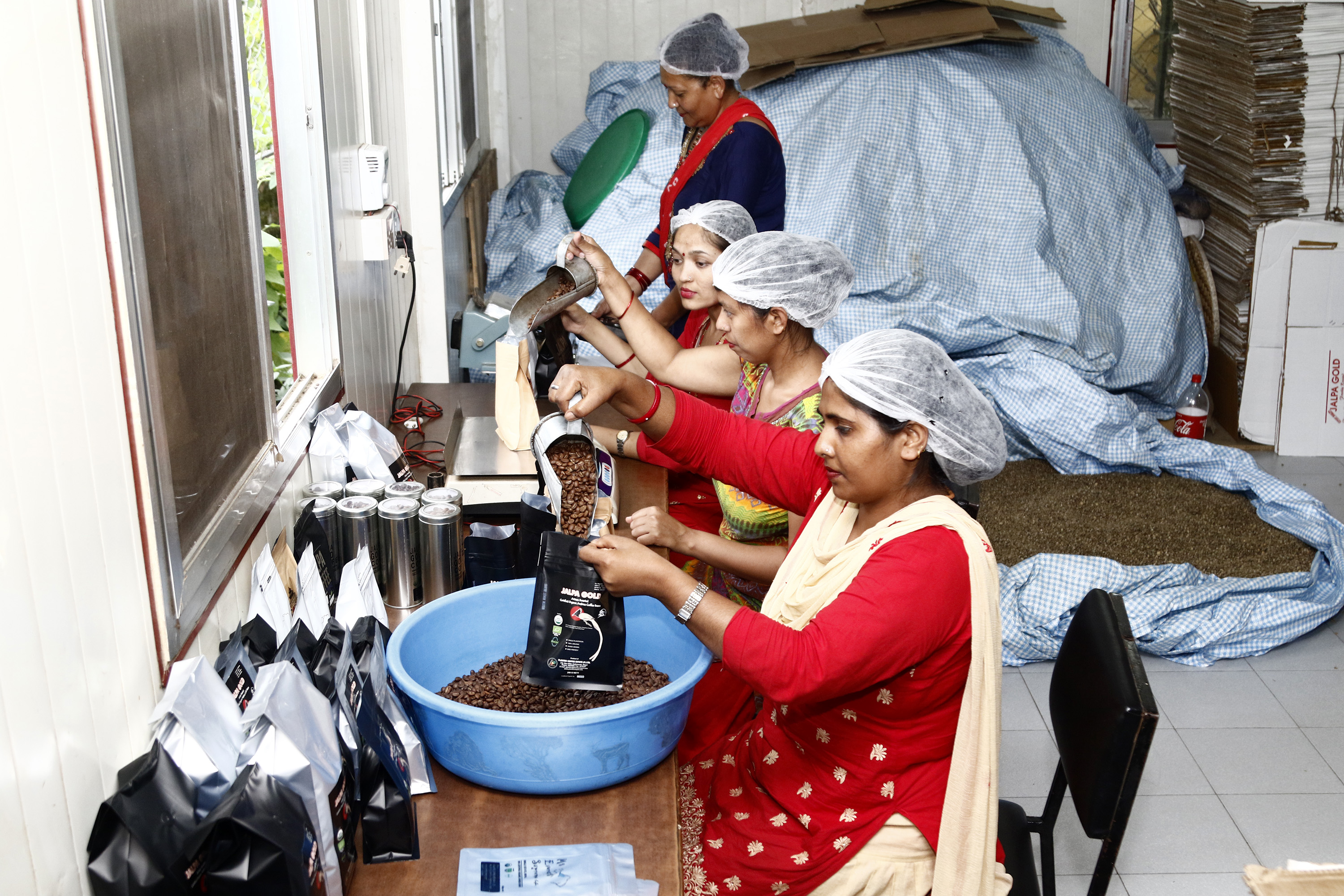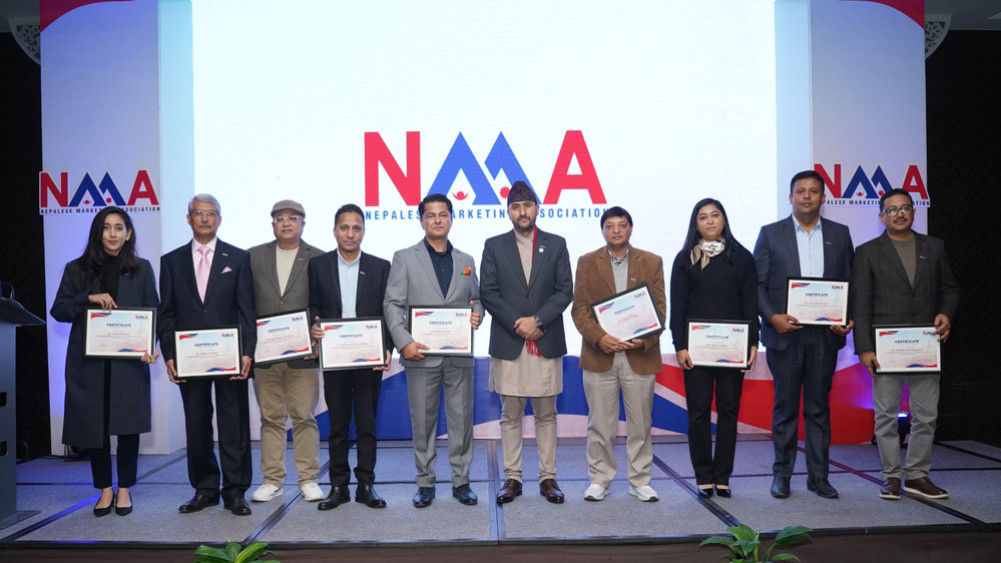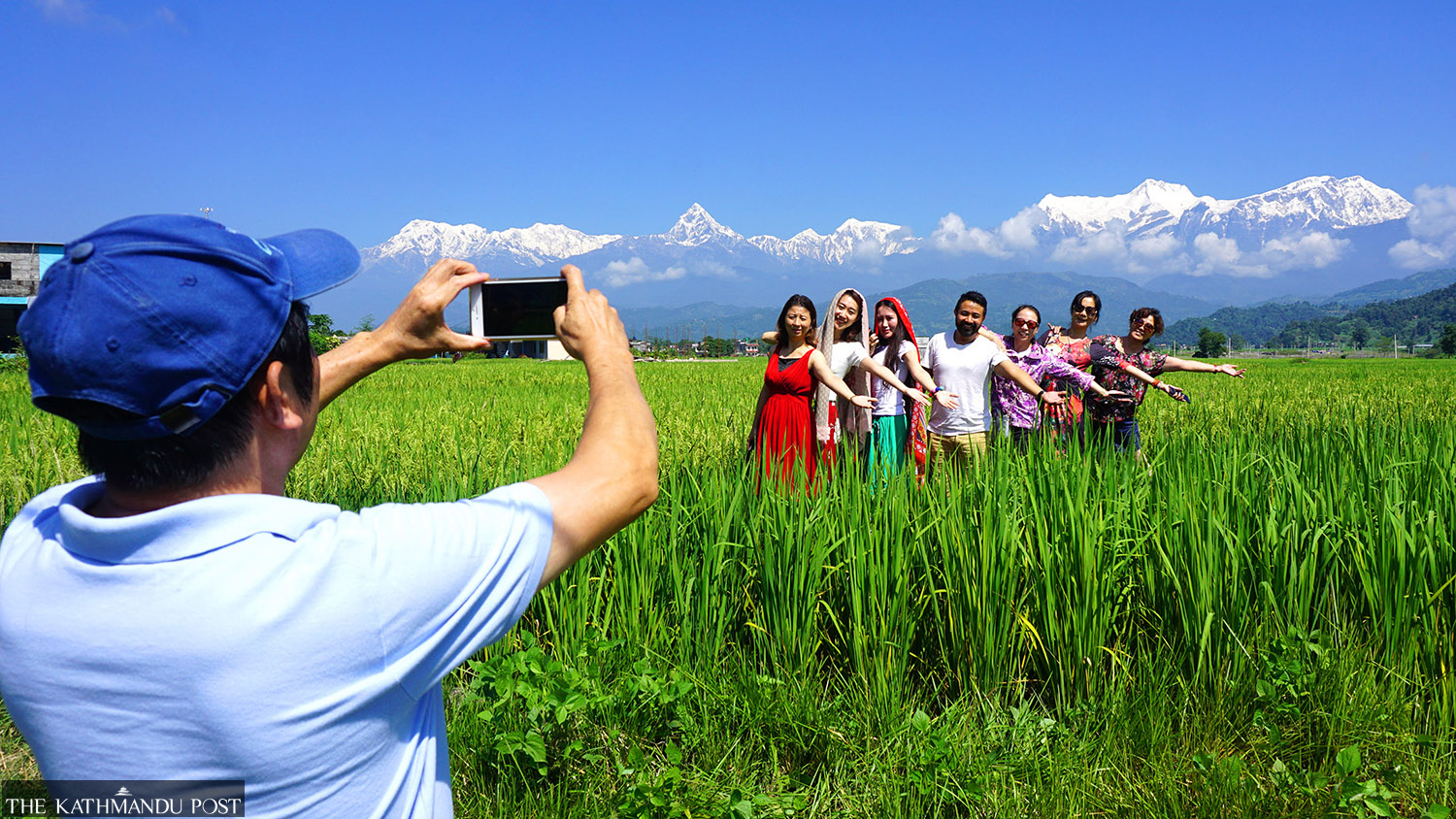Money
Nepalis wake up and smell (Nepali) coffee
More people in the country are drinking coffee than ever before, and it is not just imported coffee; there’s now a booming domestic coffee industry.
Prahlad Rijal
Janak Raj Gautam’s day begins, as it has for the last 55 years, with a steaming, freshly brewed cup of coffee. Unlike his contemporaries, who prefer a milky cup of tea, Gautam savours the dark brew, with its rich aroma and caffeine kick.
Gautam was introduced to the wonders of coffee by his father, who would regularly get a pack of cigarettes and his coffee supply delivered directly from Kolkata during the British Raj.
“Nepal did not have a culture of drinking coffee, let alone a farm,” said Gautam. “Even the governor and other high ranking officials would visit us to share a cup of coffee with my father.”
Gautam, 65, and his father were anomalies for their time. Unlike tea, which has become intertwined with Nepali culture and history, coffee, with its strong, bitter taste, took longer to find a niche. But the global boom in coffee culture has made its way to Nepal. Cafes and coffeehouses have mushroomed across the country and more Nepalis are drinking coffee than ever before, and it is not just imported coffee; there’s now a booming domestic coffee industry.
The history of coffee as a ‘curiosity plant’ in Nepal goes back over half a century. In 1938, a Burmese hermit named Hira Giri travelled to Aapchaur in Gulmi district with a pouch full of coffee seeds from Burma (now Myanmar), bringing coffee to Nepal for the first time, according to the National Tea and Coffee Development Board. The hermit planted it in the region, sowing seeds of coffee farming for the first time in Nepal. This coffee had been brought to all of British India by the Dutch and the British.
The plant was then passed around farmer to farmer for over four decades until in the late seventies when the government stepped up to bring more seeds from India and establish a coffee processing plant.
According to the National Tea and Coffee Development Board, the major shift to commercial Coffee production took place in mid-eighties and after the establishment of Nepal Coffee Company in Manigram, Rupandehi, in 1983-84, coffee producers were able to sell coffee.
Apart from the Burmese hermit, veteran coffee traders also credit Gurkha soldiers and Nepali workers at South Indian coffee plantations for bringing Arabica seeds to grow and consume locally when they returned.
“The migrants who returned grew the seeds arbitrarily and passed the plants to their relatives and younger generation who spread it around as curiosity plant at a time when the globe had already taken coffee as a staple of life,” said Ujjwal Rana, who ventured into commercial farming of coffee in Nepal in 1990, bringing Cattura seeds to Nuwakot from Papua New Guinea.
However, up until 2000, the export of coffee was just 3.6 tonnes, with an export value of less than a million at Rs 673,000, while the import of instant coffee stood at a massive Rs 43.2 million.
Two decades later, export has exponentially increased to 84.2 tonnes, generating Rs 93.72 million in income, and surpassing the imports by around Rs 30 million, shows the data from National Tea and Coffee Development Board.
Now, around 70 percent of beans grown in Nepal are exported to America, Japan and Europe, with just 30 percent traded in Nepal, but the scene is changing fast, say traders.
“Domestic consumption has grown over the decades. We are trading almost 50 percent of our annual produce in local markets,” said Shanti Chand, managing director at Plantec, a speciality coffee plantation spread over 1200 ropanies in Nuwakot district.
And it is not just large plantations that are growing coffee. The coffee plant is hardy, prompting many small farmers to invest in cultivation.
“It has been nine years since I first grew and sold dried beans. I haven’t had a bad harvest in a single year, apart from pest troubles” said Raju Dhakal, a farmer from Deupur, Kavrepalnchowk, the district that produces the most coffee in Nepal, with 943 farms over 104.3 hectares.
Dhakal, like other farmers in the district, grows around 25 coffee plants, sold to him at a subsidised rate of Rs 15 per plant by a non-governmental organisation. Every season, they produce 200 kilograms of red cherries, which Dhakal harvests, dries and sells to traders for Rs 130 per kilogram.
In November, hundreds of coffee farmers like Dhakal strolled around their farms keeping a keen eye on the ripeness of the berries. Bright red berries are what they’re looking for.
"If the berries are picked after they turn dark red, the taste will be bad," said Dhakal. "We press the berry and if it bursts easily with the bean intact, it is time to get to picking."
The ripe cherries are then dried in the sun for about two weeks with the pulp and the skin intact. This is done to balance the acidity of the fruit and produce a sweeter end product. However, this dry, or natural, the process involves a greater risk of over-fermentation, killing essential bacteria and leading to mold because of a high level of moisture inside the protective outer layer of the cherries.

From farm to table
Once picked, the cherries are fermented, and placed into a large tank where unripe and overripe cherries float and the ripe ones sink.
After 24 hours of fermentation, a pulping machine scrapes the beans out of their red layering. Then, workers hand-wash the coffee beans to rid them of their mucilage, which if left unattended can cause the beans to turn sour.
Then comes the tricky part. Generally, an unprocessed, ripe coffee bean contains around 45-55 percent moisture while the International Coffee Organization states that dried, processed green coffee beans should have a moisture content of 8-12.5 percent. To get the moisture just right, the washed, scalped beans still containing moisture levels of 18-20 percent are spread out in an area with adequate light and heat. The moisture of the washed beans are brought down to 12 percent from 18-20 percent and measured constantly until the moisture metres’ reading comes to acceptable levels. Below 8 percent, the beans get too small and are no better than unripe ones.
According to Tilak Chettri, who’s been working with coffee for the past 20 years, getting this entire process right makes a huge difference in taste, and customers can tell.
“These days, a small deviation in the fermenting, drying and pulping of cherries means a loss of taste, and ultimately consumers,” said Chettri.
Once the beans have been properly washed and dried, they are then transported to processing zones where a second sorting phase make certain only the best beans go to roasting.
The roast level varies according to the market where the coffee is to be sold, The preference of consumers is what dictates the market. For instance, to serve local markets, where the demand is for lighter coffee, the beans are roasted at 220 degrees Celsius for 15-16 minutes, to produce what are called ‘Himalayan beans’.
According to Aashish Adhikari, founder of Red Mud Coffee, every coffee outlet or brand has a specific roasting profile. In Nepal, most brands prefer either dark roast or medium roast coffee beans like Red Mud which orders roasted beans from Plantec. The cafe asks the supplier to roast the beans for a minute or two longer than usual and supply a bean bit darker than ‘Himalayan bean’ but less strong than the darkest roast which the estate produces.
Apart from taste, entrepreneurs say that roasting preserves the authenticity of the brew and its place of origin.
“The darker a bean gets, the more bitter the drink will be. In Nepal, there is a trend of importing dark coffee from India,” said Prabesh Humagain, a Specialty Coffee Association Certified Barista and co-founder of Red Mud. “If all cafes have dark coffee as their default, the difference between Nepali and Indian coffee would be lost.”

Beans for export, however, are roasted for slightly longer, as export markets tend to prefer stronger, more bitter coffee. The beans are roasted for three to four minutes longer than for the domestic market, which produces dark-brown beans with strong aroma and a burnt flavor.
Once roasted, the beans are packaged and transported to various retailers and cafes around the country, and abroad.
Sandalj Trading, Italy’s largest coffee trader, now imports tons of Nepali coffee—Mt Everest Washed Supreme—grown in the Trishuli river basin, listed as part of its brands of ‘excellence’.
In 2016, Himalayan Arabica Nepal Specialty was even awarded Best Gourmet Coffee of 2016 at the Second International Contest of Coffee Roasted in their Countries of Origin by the Agency for the Valorization of Agricultural Products in Paris, France.
However, a majority of the stakeholders say that low production is at the core of the slow-growing market for Nepali coffee.
“At present, we are only producing around 500 tonnes of green beans and that is meagre when we look at the global and domestic demand of 6000 tonnes for Nepali coffee,” said Dipak Khanal, director of the National Tea and Coffee Development Board. “With the exception of one or two large organic farms, coffee plantation in Nepal is scattered in small-scale farms and cooperatives.”
And despite a surge in the number of coffee farmers and consumers alike, the production remains stagnant with slack expansion of coffee plantations.
Local coffee producers say they are struggling to gain a competitive edge against foreign traders who have adopted morally questionable measures in Nepal’s domestic market to attract hotels and cafes towards imported, low-quality coffee.
“Several low grade coffee suppliers in Nepal provide hotels, restaurants and cafes with brewing machines and easy payment schemes in return for long-term contracts to sell their product,” said Chand. “In such cases, it’s not quality or taste that sells the product and local suppliers with superior products struggle to compete.”
***
What do you think?
Dear reader, we’d like to hear from you. We regularly publish letters to the editor on contemporary issues or direct responses to something the Post has recently published. Please send your letters to [email protected] with "Letter to the Editor" in the subject line. Please include your name, location, and a contact address so one of our editors can reach out to you.




 12.12°C Kathmandu
12.12°C Kathmandu





